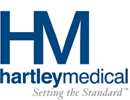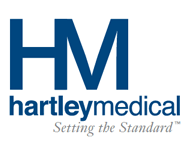As part of my never-ending quest for quality perfection, I have always sought out equipment to help Hartley Medical ensure the optimum in quality assurance testing. We recently acquired a new instrument of which I am exceedingly proud, and my son Gordon has suggested I talk about it.
More than ten years ago, I considered purchasing an analytical device called a HPLC ““ High Performance Liquid Chromatography. It’s more than just the latest thing “¦ it is literally straight out of C.S.I. In all the CSI dramas, the lead investigator has a lab person that can tell you the exact number of micrograms of poison in the concoction used for the demise of the latest victim. The HPLC is the equivalent of that guy.
At that time, I was dissuaded by others who cautioned me:
“Don’t do it. You don’t need it “¦ too sophisticated.”
“Too expensive.”
“Too costly to run “¦ and you’ll need to hire a technician just to operate it.”
So I shelved it.
My first exposure to the HPLC was in college when it was introduced in a chemistry lecture. My professor said at the end of the lecture, “The next frontier is HPLC.” I remember saying to myself “I’d really like to be able to do that.”
It’s gratifying when the impressions and judgments we make at earlier times in life come back and are confirmed. I’m happy that the goals I developed during my encounters with organic chemistry, and pharmaceutical medicine and technology, are now realized. Twenty years later ““ at the end of a year-long process of investigation and working with a seasoned pharmaceutical consultant ““ I took a leap of faith and purchased a state of the art HPLC device.
The dream is now an analytical reality. To my knowledge, Hartley Medical is the only intrathecal drug provider that has this in-house capability.
The HPLC has opened up a whole new world of quantitative analytical chemistry, as well as quality control possibilities. With the HPLC, we can quantify the number of milligrams per unit of volume and the accuracy of final compounding of products for patient administration. We can determine the exact levels of morphine in compounded preparations ““ and not to the standard plus or minus 10%, but plus or minus 2 to 5 %. We have the ability to tell you exactly how much caffeine is in your morning cup of coffee.
We have often been approached by clinicians and physicians to conduct studies long overdue, but which are now accomplishable. We have achieved a new level of quality control, a new standard of accuracy “¦ and yet we’ve still only scratched the surface of possibility and potential. I look forward in the months ahead to keeping you informed of our progress.



Leave A Comment